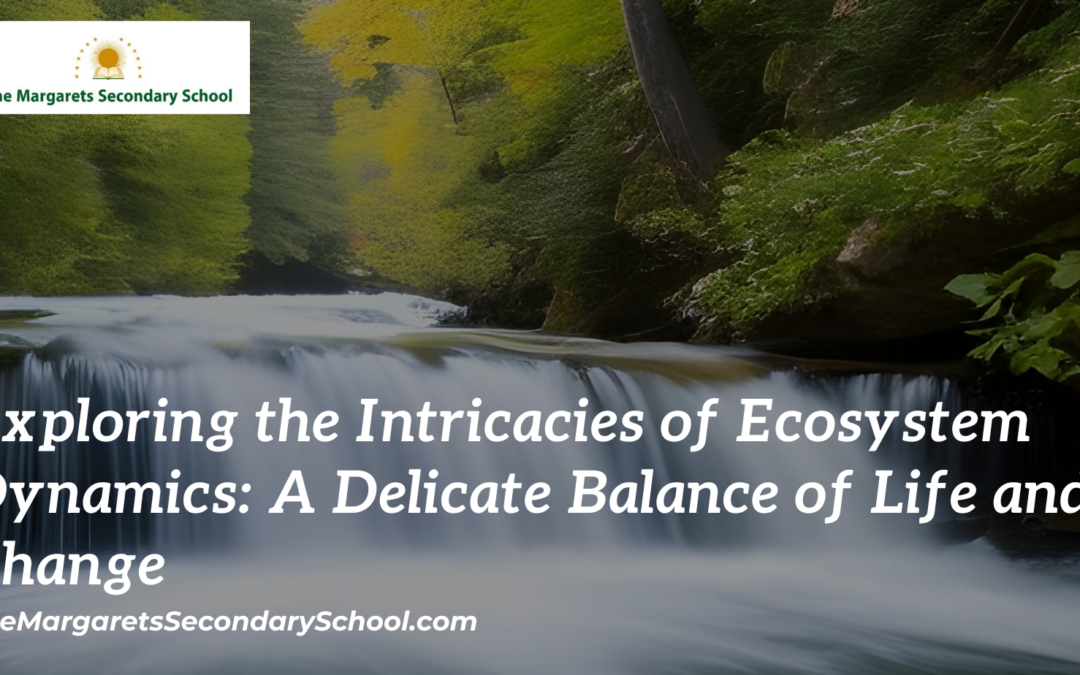Ecosystem Dynamics
Our planet is home to a mesmerizing tapestry of interconnected life forms, landscapes, and environments that collectively form the complex web of ecosystems. Ecosystems, defined as the intricate interactions between living organisms and their physical surroundings, exhibit a dynamic nature that plays a pivotal role in maintaining the delicate balance of life on Earth. The study of ecosystem dynamics unravels the intricate processes, relationships, and changes that govern these vibrant systems.
The Foundation of Ecosystem Dynamics: Interconnectedness
At the heart of ecosystem dynamics lies the concept of interconnectedness. Every element within an ecosystem, from the smallest microorganism to the largest predator, is part of an intricate web of interactions. These interactions can be classified into various categories: trophic interactions (feeding relationships), mutualism (symbiotic relationships benefitting all parties involved), competition (struggle for resources), and more. Through these interactions, energy, nutrients, and information flow, creating a balance that sustains life.
The Dance of Energy Flow
Energy is the lifeblood of ecosystems. The sun serves as the primary energy source, driving the process of photosynthesis in plants, algae, and certain bacteria. These primary producers convert solar energy into chemical energy stored in organic compounds. Herbivores then consume these producers, followed by carnivores and other higher-level predators in the food chain.
This energy flow follows the laws of thermodynamics, particularly the second law, which states that energy transfers are never 100% efficient. With each transfer, some energy is lost as heat, limiting the length and complexity of food chains. This energy flow is a crucial driver of ecosystem dynamics, as changes in one part of the food web can ripple through the entire system, affecting population sizes, species compositions, and overall ecosystem health.
The Rhythm of Nutrient Cycling
In addition to energy, nutrients are essential for the functioning of ecosystems. Nutrient cycling involves the movement of essential elements like carbon, nitrogen, and phosphorus through different living and non-living components of the ecosystem. Decomposers, such as bacteria and fungi, play a pivotal role in breaking down organic matter, returning nutrients to the soil and making them available for plants to uptake.
Human activities, such as deforestation, industrial agriculture, and pollution, can disrupt these natural nutrient cycles, leading to imbalances that impact the health and resilience of ecosystems. Understanding nutrient cycling is crucial for maintaining sustainable practices and mitigating the negative effects of human intervention.
Embracing Change: Succession and Adaptation
Ecosystems are not static entities; they undergo constant change through processes like ecological succession. This is the gradual transition of species and communities over time, often in response to disturbances such as fires, floods, or human activities. Pioneer species, which are specially adapted to harsh conditions, are the first to colonize disturbed areas. Over time, as soil conditions improve and other species move in, the composition of the ecosystem shifts.
Adaptation is another crucial aspect of ecosystem dynamics. Species evolve over time in response to changing environmental conditions. This can happen through natural selection, where individuals with advantageous traits are more likely to survive and reproduce. In the face of rapid environmental changes caused by human activities, some species may struggle to adapt quickly enough, leading to shifts in population dynamics and potential extinctions.
The Human Factor: Conservation and Restoration
As custodians of Earth, humans play a significant role in shaping ecosystem dynamics. Conservation efforts aim to protect and preserve the natural balance of ecosystems by minimizing human impacts. Restoration efforts, on the other hand, focus on rehabilitating degraded ecosystems by reintroducing native species, managing invasive species, and restoring natural processes.
In recent years, the urgency of addressing climate change, habitat loss, and biodiversity decline has underscored the importance of understanding and actively managing ecosystem dynamics. Collaboration between scientists, policymakers, communities, and industries is vital to ensure the sustainability of ecosystems for current and future generations.
A Final Thought
Ecosystem dynamics exemplify the complexity and beauty of life on Earth. From the dance of energy flow to the rhythm of nutrient cycling, these processes remind us that every living organism is part of a greater whole. As we navigate the challenges of the modern world, embracing our role as stewards of ecosystems becomes more crucial than ever. By valuing and safeguarding these intricate systems, we can continue to unlock the secrets of the natural world while ensuring its prosperity for generations to come.





